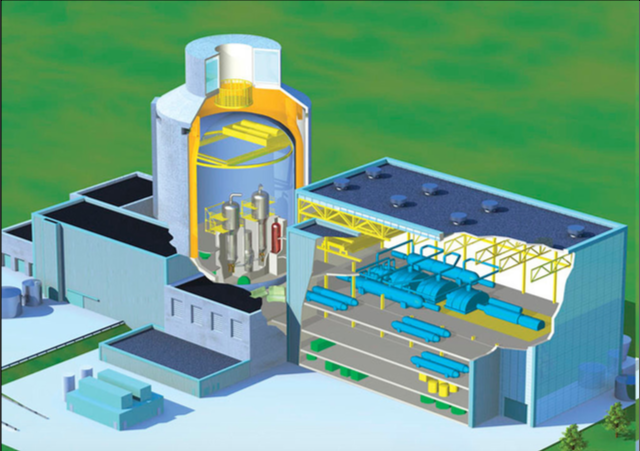
On Wednesday, Westinghouse Electric Company, a subsidiary of Japanese company Toshiba, filed for Chapter 11 bankruptcy protection. The company claimed in a court filing that it was losing money on construction projects in South Carolina and Georgia, although it maintained that nuclear fuel and plant servicing operations remained “very profitable.”
The construction cost overruns fall on nuclear power plants that would have contained Generation III+ AP1000 reactors, which Westinghouse designed with “passive safety features,” like using gravity and convective cooling, to make them simpler, easier to maintain, and more resistant to earthquakes, plane crashes, or electrical blackouts. According to The New York Times, the two projects are nearly three years overdue and have cost somewhere between $1 billion and $1.3 billion more than expected.The two projects include the Alvin W. Vogtle generating station in Georgia, which was in the news in February 2015 for missing deadlines and for cost overruns, and South Carolina Gas & Electric’s Virgil C. Summer plant in Jenkinsville, South Carolina, which has suffered similar setbacks.
The Times attributes the construction issues to inexperience on the part of the contractors, especially given how little new nuclear power plant construction had been underway in the previous decades. While Westinghouse was responsible for reactor design, a company called S&W was responsible for on-site construction, Westinghouse wrote in its court filing (PDF). But delays were inevitable: the reactor company claims that safety regulations passed to prevent terrorist attacks against targets like nuclear reactors forced redesign and relicensing of the two power plants, which “created additional, unanticipated engineering challenges that resulted in increased costs and delays on the US AP1000 Projects.”
From there, a flurry of lawsuits were threatened between the various stakeholders in the agreement. “To resolve existing and potential litigation, [Westinghouse] considered the feasibility of acquiring S&W,” the company noted. “WEC believed such an acquisition would allow the parties to re-baseline the projects and increase the likelihood of their success.” But the generating station never got back on track.
According to a press release from the company, Westinghouse obtained $800 million in debtor-in-possession financing to “protect its core businesses during its reorganization.” It’s unclear how the construction on both projects will proceed, but the chairman of the Georgia Public Service Commission told the Times that if Westinghouse asks to re-certify the project, the commission would have to weigh that request against natural gas or renewable energy.
Westinghouse is the manufacturer of 111 of the 450 operable nuclear reactors worldwide, according to court documents filed at Southern New York’s federal bankruptcy court.
reader comments
195